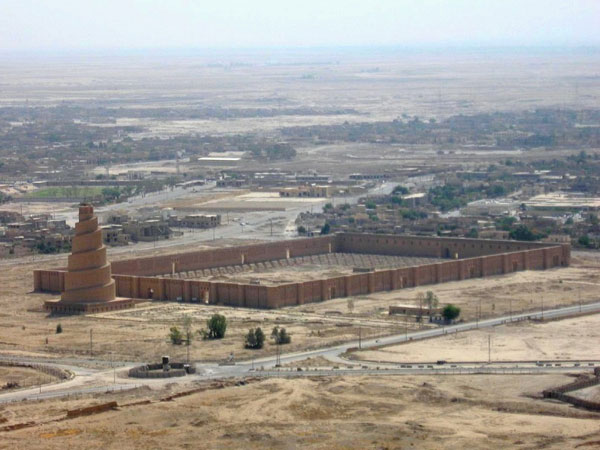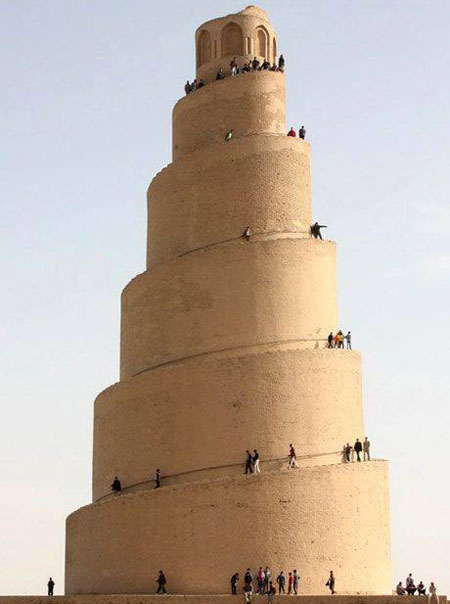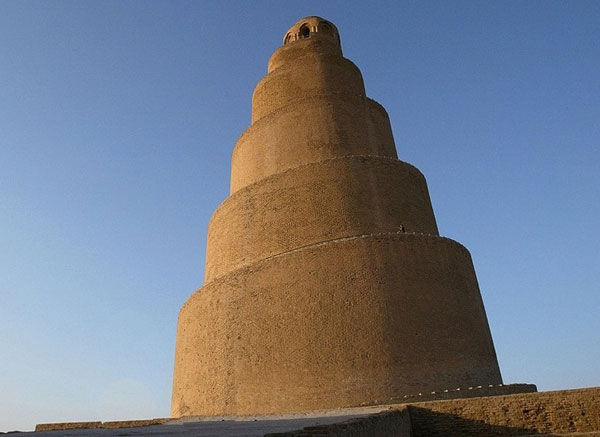The Great Mosque of Samarra is a ninth-century mosque located in Samarra, Iraq. The mosque was commissioned in 848 and completed in 851 by the Abbasid caliph Al-Mutawakkil who reigned (in Samarra) from 847 until 861.
The Great Mosque of Samarra was, for a time, the largest mosque in the world; its minaret, the Malwiya Tower, is a spiralling cone 52 metres (171 ft) high and 33 metres (108 ft) wide with a spiral ramp.[2] The reign of al-Mutawakkil had a great effect on the appearance of the city, for he seems to have been a lover of architecture, and the one responsible for building the great Mosque of Samarra.[3] In a list of his building projects which appears in several different versions, the new Congregational Mosque and up to twenty palaces are mentioned, totalling between 258 and 294 million dirhams. The new Congregational Mosque, with its spiral minaret, built between 849 (235 AH) and 851 (235 AH), formed part of an extension of the city to the east, extending into the old hunting park.
The mosque had 17 aisles, and its walls were panelled with mosaics of dark blue glass. It was part of an extension of Samarra eastwards.
The art and architecture of the mosque were influential; stucco carvings within the mosque in floral and geometric designs represent early Islamic decoration. Additionally, the mosque of Ibn Tulun in Cairo, Egypt was based on the Samarra mosque in many regards.
The mosque itself was destroyed in 1278 (656 AH) after Hulagu Khan's invasion of Iraq. Only the outer wall and its minaret remain.
"Great mosque, Samarra, was built during the caliphate of al-Mutawakkil. It is the largest mosque in the world. Built entirely of brick within a wall flanked with towers, it has a 55 m high minaret with a spiral ramp that recalls the ziggurats of Mesopotamia".
— Henri Stierlin, Comprendre l'Architecture universelle 2. p347












